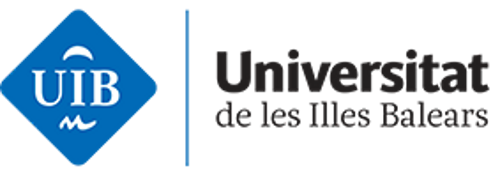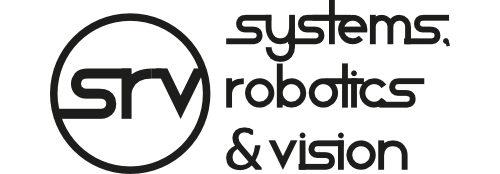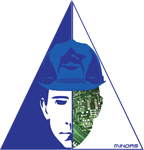Contact
Francisco Bonnín PascualEdifici Anselm Turmeda, D146
University of the Balearic Islands
Ctra. Valldemossa, Km 7.5
07122 Palma de Mallorca
Illes Balears, Spain
Contact: +34-971-172-565
xisco.bonnin@uib.es
H2020 Projects
FP7 Projects
FP6 Projects
Spanish Research Projects
Funded Projects
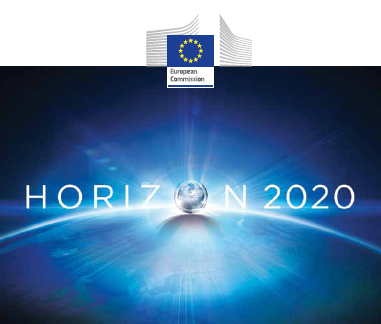
H2020 Projects
BUGWRIGHT2 - Autonomous Robotic Inspection and Maintenance on Ship Hulls and Storage Tanks
2020-2024
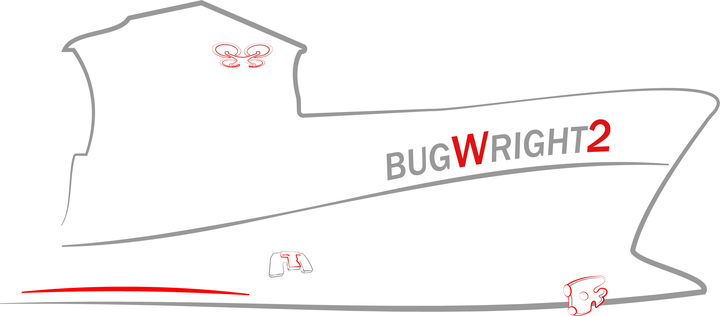
The objective of BUGWRIGHT2 will be to bridge the gap between the current and desired capabilities of ship inspection and service robots by developing and demonstrating an adaptable autonomous robotic solution for servicing ship outer hulls. By combining the survey capabilities of autonomous Micro Air Vehicles (MAV) and small Autonomous Underwater Vehicles (AUV), with teams of magnetic-wheeled crawlers operating directly on the surface of the structure, the project inspection and cleaning system will be able to seamlessly merge the acquisition of a global overview of the structure with performing a detailed multi-robot visual and acoustic inspection of the structure, detecting corrosion patches or cleaning the surface as necessary – all of this with minimal user intervention. The detailed information provided will be integrated into a real-time visualization and decision-support user-interface taking advantage of virtual reality technologies. Although ships are the targetted application, BUGWRIGHT2 technology may be easily adapted to different structures assembled out of metal plates, and in particular to storage tanks, our secondary application domain. The project consists of a large consortium bringing together not only the technological knowledge from academia but the complete value chain of the inspection robotic market: two SMEs, one class society to evaluate the use of these technologies in the certification processes, a marine service provider and two harbors to provide access to ships, one shipyard to deploy the system within a maintenance framework and two shipowners. In addition, specialists in maritime laws and workplace psychologists will ensure that the digitalization of this market sector is designed around user acceptance. Finally, a specialist in innovation will lead the dissemination and exploitation activities.
CORDIS PageThe ROBINS project aims at filling the technology and regulatory gaps that today still represent a barrier to the adoption of Robotics and Autonomous Systems (RAS) in activities related to inspection of ships, understanding end user's actual needs and expectations and analyzing how existing or near-future technology can meet them. ROBINS aims to improve the ability of RAS in sensing and probing, in navigation and positioning in confined spaces, as well as the capability to access and move safely within hazardous spaces. ROBINS also aims to provide new software tools for image and data processing, e.g. for production of 3D models and virtual/augmented reality environments, to provide the surveyor with the same level of information as obtained by direct human observation. A framework for the assessment of equivalence between the outcomes of RAS-assisted inspections and traditional procedures will also be provided by defining test procedures, criteria and metrics for the evaluation of RAS performance. Test campaigns will be performed both on-board and in a specific testing facility, where repeatable tests and measurements can be carried out. The development of robust technical solutions and a regulatory framework for RAS-assisted ship inspection is expected to streamline wide scale adoption of RAS technology in marine industry. The impact on safety, as far as hazardous environments are involved, can be easily understood and has already been witnessed in similar industrial domains (energy, oil and gas). The economic impact is expected to be beneficial for robotics industry (new supply chains and new potential markets), ICT industry (new services and products for data processing specific to marine industry), ship asset owners and operators (reduction of costs due to simplified preparation of items, reduced survey duration, improved quality and variety of inspection services) and certification bodies (new certification schemes for equipment, operators and procedures).
CORDIS Page
FP7 Projects
In the day-to-day ship operations, structural and machinery failures may lead to major accidents, endangering crew and passengers lives onboard, posing a threat to the environment, damaging the ship itself and having a great impact in terms of business losses. Moreover, with the introduction and building of a big number of new ships, their monitoring and inspection from both regulatory bodies and Classification Societies has become more and more difficult in order to obtain the optimum inspection results and eliminating the hazards pose by high-risks and sub-standard ships. In this respect, the INCASS (Inspection Capabilities for Enhanced Ship Safety) project brings together a range of experienced and dedicated partners in order to tackle the issue of ship inspection, identification of high-risk ships, providing access to information related to ship surveys independent of the ship's flag and inspection regime and moreover incorporate enhanced and harmonised cooperation and maritime stakeholders in order to avoid ship accidents, promote maritime safety and protect the environment. The INCASS consortium aims to bring an innovative solution to the ship inspection regime through the introduction of enhanced inspection of ship structures based on robotic platforms, providing ship structures and machinery monitoring with real time information using 'intelligent' sensors and incorporate Structural and Machinery Risk Analysis. Moreover, by introducing Condition Based Inspection tools and methodologies, reliability and critically based maintenance, providing an enhanced Central Database including ship structures and machinery available to maritime authorities (e.g. EMSA, Port State Control), Classification Societies and ship operators and eventually by developing a Decision Support System for ship structures and machinery for continuous monitoring and risk analysis and management of ship operations.
CORDIS PageINCASS YouTube Channel
The increasing competitiveness in marine operations creates a need for new system concepts that introduce high technology value added products, facilitate the processes involved and minimize the downtimes. The need, thus, lies not only in incorporating the technological means so far available, but in changing the way the corresponding authorities stand against the challenges at hand.
MINOAS project proposes reengineering of the overall vessel-inspection methodology, by introducing an innovative system concept that incorporates state of the art technologies, but at the same time formulates a new standardization of the overall inspection process. Through holistic approach, MINOAS proposes the development of a new infrastructure that substitutes human personnel by high locomotion enabled robots and "teleports" the human inspector from the vessel's hold to a control room with virtual reality properties. The human's perceptual abilities are enhanced through the utilization of high resolution tools (eg. sensors) and are augmented through the parallel processing property provided by MINOAS. Following the centralized control scheme adopted in similar distributed control methodologies (SCADA), the number and the sequence of the tasks required is rearranged and the overall inspection procedure is brought in alignment with the current tendency adopted in similar inspection, exploration and surveillance tasks.
The proposed innovative system concept, considers the assembly of a robot fleet with advanced locomotion abilities and sets of tools that are dedicated to the tasks attached to the inspection process, the development of control techniques and algorithms that provide a semi-autonomous nature to the operation of the robot-fleet and a hierarchical controller that realize the virtual environment for the human inspector and adds newly developed toolboxes enabling on-line processing of the harvested data and operate as a Decision Support System in the aid of the inspector.
CORDIS PageMINOAS YouTube Channel
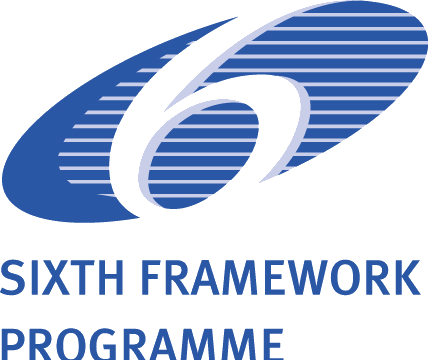
FP6 Projects
SHARE-it - Supported Human Autonomy for Recovery and Enhancement of cognitive and motor abilities using information technologies
2007-2009

The goal of SHARE-it is to develop a scalable, adaptive system of add-ons to sensor and assistive technology so that they can be modularly integrated into an intelligent home environment to enhance the individual’s autonomy. The system will be designed to inform and assist the user and his/her caregivers through monitoring and mobility help.
Thus, we plan to contribute to the development of the next generation of assistive devices for older persons or people with disabilities so that they can be self-dependent as long as possible. We focus on add-ons to be compatible with existing technologies and to achieve an easier integration into existing systems. We also aim at adaptive systems as transparent, and consequently, easy to use to the person as possible. Scalability is meant to include or remove devices from the system in a simple, intuitive way.
SHARE-it will address important issues in sensor networks, assisted mobility, knowledge engineering and Ambient Intelligence. In this context SHARE-it will make significant contributions to fundamental, long-term research in the following areas:
- C1: Sensor-based environment perception, knowledge acquisition and representation, high-level reasoning and goal seeking behaviours in a real world (preferred environment).
- C2: Verifying software adaptation to human with special needs: both at design and run-time - as operating conditions and governing norms change - to establish (e.g.) safety, regulatory and security requirements.
- C3: Incorporating shared autonomy: ensuring individual software components and groups of software components can be designed to operate in a given intelligent ambiance and adapt to possible changes both in the needs of the user or in the environment.
The objectives of SHARE-it are:
- O1: To explore the benefits of the concept of situated intelligence to build elements (add-ons) that will enhance the autonomy of the target user group in their daily life in their preferred environment.
- O2: To investigate and implement innovative forms of shared autonomy.
- O3: To build appropriate add-ons to standardised technologies to provide ubiquitous sensing, computation and assistance
- O4: To build adaptive interfaces for the target group.
- O5: To target the various human-delivered assistance and caretaking services as effectively as possible.
The consortium includes 1 major industrial partner, 3 Universities, 2 research Institutes and 2 Health Care institutions.
The overall project work is intended to bring together existing work from a number of areas and make a concerted effort to develop a sound paradigm for future development of mission critical systems for individuals suffering disabilities involving automated components: creating important reference points in the field, aiming to catalyse debate and opening future research directions.
CORDIS PageSpanish Research Projects
FUSIGEMAP - FUzzy SImilarity measures and GEneralized Metrics with Applications to Perception (and robotics)
2023-2027
Similarity measures (fuzzy or crisp) and generalized metrics (GM) have been theoretically studied separately, and certain relationships of duality have been stated between them. This duality plays a key role because it allows introducing methods that construct new similarity measures from generalized metrics, and vice-versa, what may be better adapted to the specific problem under consideration. In the literature, there is a shortage of cases of similarity measures which turns out to be a drawback when one wants to apply them to engineering problems. Inspired by this fact, in project FUZZYMAR (PGC2018-095709-B-C21), we explored in depth the duality problem in such a way that we developed specific techniques for generating two particular classes of similarity measures, fuzzy metrics (FM) and indistinguishability operators (IO), from classical metrics and, reciprocally, classical metrics from FM and IO.
Despite the progress made in FUZZYMAR regarding FM and IO and the duality technique, and their applications in engineering, there remain many theoretical matters to be addressed about similarity measures and GM in a more general framework, and also regarding their application onto problems that can be generally framed within the Artificial Intelligence domain, and more specifically onto Perception and Robotics, the latter both by extension of the former, i.e. an autonomous robot has to be able to perceive its environment, and alone within the context of heterogeneous multi-agent systems (HMAS).
With FUSIGEMAP we intend to go further ahead into the theoretical study of general similarity measures (modular fuzzy similarities, fuzzy binary relations and metric similarities) and their relationship with generalized metrics, as well as focus on using the new theoretical background in perception and robotics: (1) to consider jointly the generic problems of deciding whether two entities are the same [matching] or how similar/dissimilar they are [grouping], (2) to advance on robust model fitting with regard to the results achieved in FUZZYMAR, (3) to revisit state estimation for dynamic systems, and (4) to address the modelling of heterogeneous multi-agent systems.
Hence, FUSIGEMAP is a project that focuses on advancing the state of knowledge both at the theoretical and applied levels. Moreover, the focus is on delving into the theoretical-practical development of similarity measures (fuzzy and crisp) and generalized metrics by stablishing a strong synergy with applications where the fuzzy approach has been relevant in the past.
Fuzzy metrics are considered as an appropriate mathematical tool of measurement when such a measurement yields a degree of similarity relative to the value of a parameter. On the other side, indistinguishability operators provide a degree of such a similarity extending the notion of equivalence class to the fuzzy context. In the literature, one can find that the development of both mathematical frameworks is carried out independently and assuming that both notions are unrelated, since fuzzy metrics involve a parameter in its formulation and indistinguishability operators do not. The concept of modular indistinguishability operator, which involves a parameter in its formulation, has been introduced recently. This new kind of operator has allowed unifying under the same framework the aforesaid apparently unrelated fuzzy notions of measuring. This opens a wide range of possibilities which are totally unexplored from both the theoretical and applied viewpoints.
The main theoretical target of the project is to study what properties of fuzzy metrics and indistinguishability operators remain valid in the general framework of modular indistinguishability operators and, thus, try to make clear the differences with the results coming from the two classical frameworks. The extension to the modular context of all topological results for fuzzy metrics and all results of structure and representation for indistinguishability operators will be addressed. Moreover, this viewpoint will help us transfer, to the indistinguishability context, typical results that only could be stated in the fuzzy metric context, and vice versa. Moreover, applications of the new developed results to fixed point theory are expected to be given in such a way that fixed point results in the context of fuzzy metrics will be retrieved as a particular case. Furthermore, relationships between aggregation theory, generalized metric structures and modular indistinguishability operators are also an objective of the theoretical approach of the project.
Regarding the application of the theoretical results, the FUZZYMAR project aims at developing new techniques and algorithms that involve the use of modular indistinguishability operators as similarity measures in: (1) addressing two recurring problems in general robotics, namely robust model fitting and (visual) descriptors comparison and matching, both with also application to computer vision and pattern recognition, and (2) modelling multi-robot systems adopting swarm techniques, to deepen in the analysis of their performance and accordingly devise better coordinated task execution strategies.
SUPERION focuses on two general objectives: enhance 3D reconstruction capabilities for underwater environments by means of optical sensors and improve target detection methods using multimodal sensor data. SUPERION is the UIB subproject of MERBOTS project.
The TRITON research project pursues the use of autonomous vehicles in the accomplishment of complex underwater intervention tasks. The project will emphasize the operation of multiple vehicles (an AUV and an I-AUV) cooperating in a coordinate manner during the execution of a mission, as well as in increasing the dexterity of a robotic arm (currently under development in the context of the RAUVI project), that will be installed in the I-AUV.
